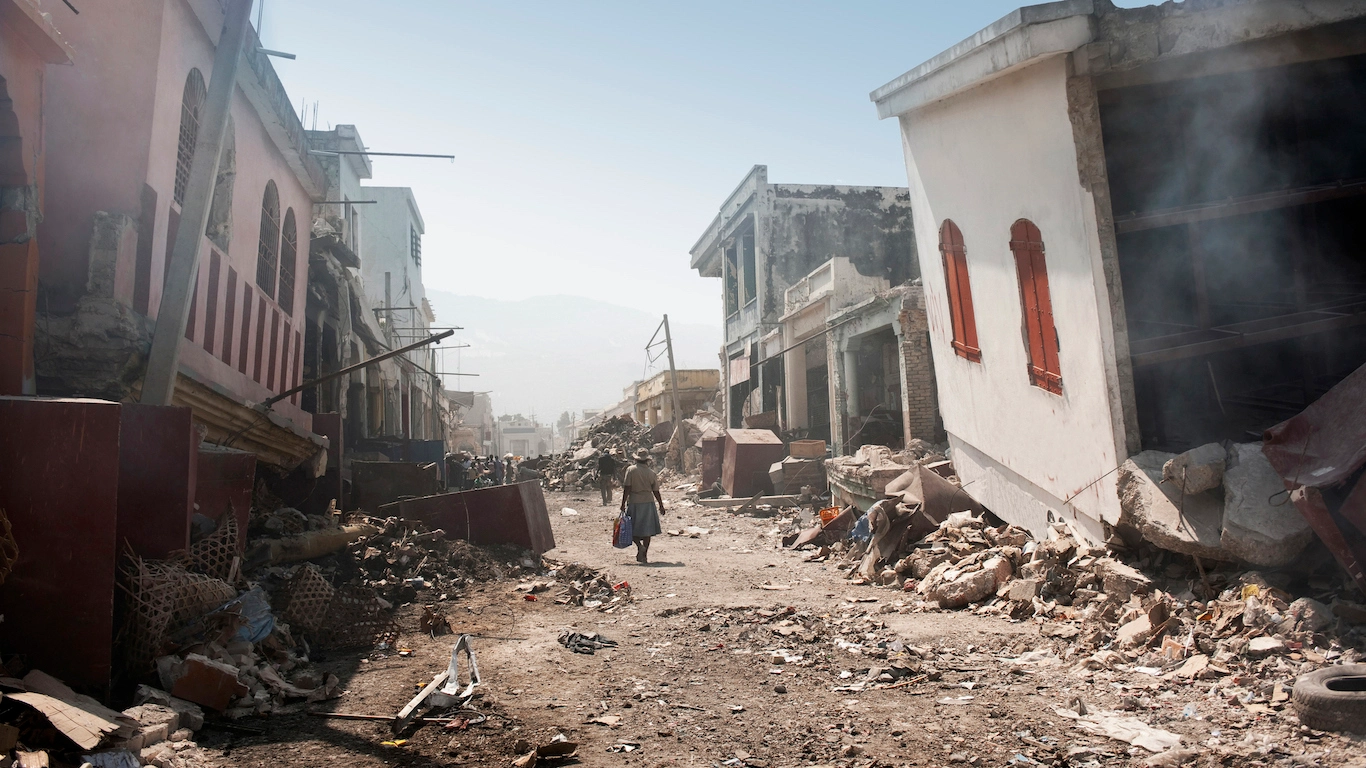
Over the past decade, natural disasters have killed an average of approximately 45,000 people each year, according to Our World in Data. The organization, which tracks earthquakes, volcanic activity, landslides, drought, wildfires, storms, and flooding across the globe, emphasizes the number varies annually based on how widespread the impact of a disaster (or disasters) is, the frequency, and severity of a disaster – or disasters – in any given year.
Throughout history, high death tolls followed droughts and floods. Today, single catastrophic events like earthquakes cause the most fatalities, like the massive Haitian earthquake in 2010. Low- to middle-income countries tend to be hardest hit when a natural disaster strikes due to less resilient infrastructure. See the places most vulnerable to disaster.
Sadly, floods and hurricanes still kill many thousands of people as the disasters described here show. Yet the absence of rain can also lead to droughts, leading to starvation and disease outbreaks in many countries, notably in Africa.
Scientists predict that climate change will increase the frequency and intensity of some natural disasters, which would cost more lives, destroy more property, and displace more people. Here are the worst climate-related disasters since 2010.
To determine the countries where the most people die due to natural disaster, 24/7 Wall St. reviewed data from the international disaster database EM-DAT, of the Centre for Research on the Epidemiology of Disasters. Countries were ranked based on the average annual number of deaths due to natural disaster per 1 million people since 1960.
Natural disasters include drought, earthquake, volcano, mass rock movement, storm, flood, epidemic, landside, wildfire, extreme temperature, fog, insect infestation, impact, animal accident, or glacial lake outburst. Population data used to adjust deaths per capita came from the World Bank. All other data is from EM-DAT.
Click here to see countries where the most people have died in natural disasters.





